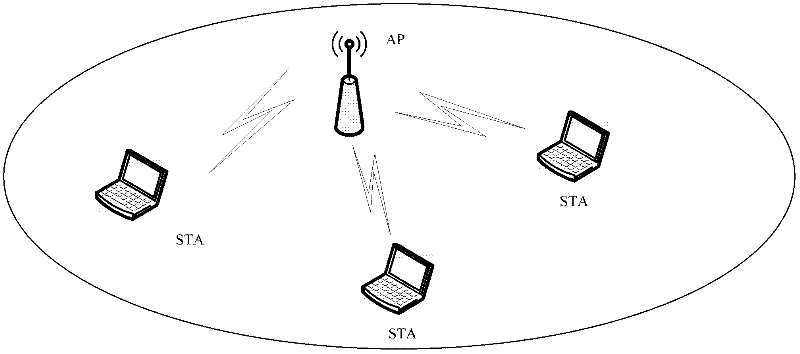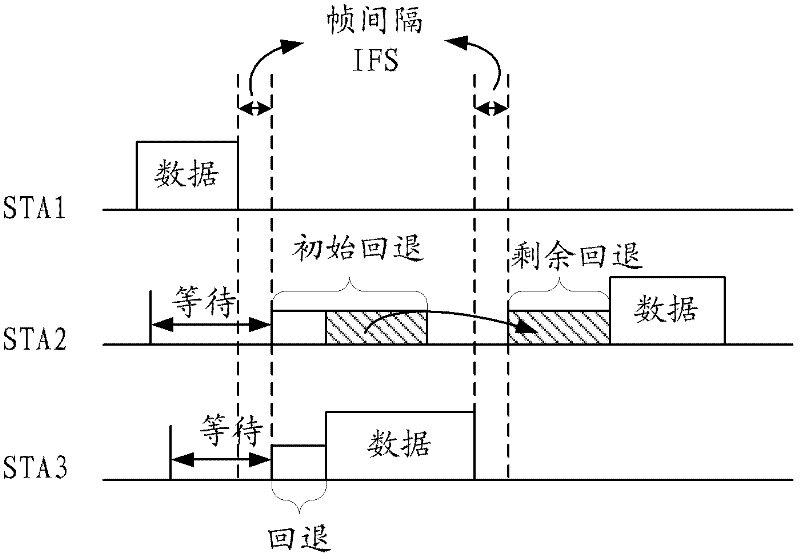Method for avoiding network congestion in 802.11 competition type data transmission process
A technology for data transmission and network congestion, applied in electrical components, wireless communication, etc., can solve problems such as insufficient application layer settings, increased conflicts, unsuitable transmission methods, etc., and achieve the effect of avoiding network congestion
- Summary
- Abstract
- Description
- Claims
- Application Information
AI Technical Summary
Problems solved by technology
Method used
Image
Examples
Embodiment Construction
[0090] In order to make the object, technical solution and advantages of the present invention clearer, the present invention will be further described in detail below with reference to the accompanying drawings and examples.
[0091] Such as Figure 4 , Figure 5 As shown, the 802.11-based network congestion relief provided by the present invention, the method for enhancing data transmission includes:
[0092] Step 1: Select one of the STAs in the Infrastructure BSS network to belong to different priority groups;
[0093] Step 2: Set the transmission factor for each priority group respectively;
[0094] Step 3: After the STA is associated with the Infrastructure BSS network, before using DCF or EDCA to compete for the channel, determine whether the STA competes for the channel according to the transmission factor of the priority group to which the STA belongs.
[0095] In step 1, according to the situation, different priority groups with the same priority may also exist at...
PUM
 Login to View More
Login to View More Abstract
Description
Claims
Application Information
 Login to View More
Login to View More - R&D
- Intellectual Property
- Life Sciences
- Materials
- Tech Scout
- Unparalleled Data Quality
- Higher Quality Content
- 60% Fewer Hallucinations
Browse by: Latest US Patents, China's latest patents, Technical Efficacy Thesaurus, Application Domain, Technology Topic, Popular Technical Reports.
© 2025 PatSnap. All rights reserved.Legal|Privacy policy|Modern Slavery Act Transparency Statement|Sitemap|About US| Contact US: help@patsnap.com



